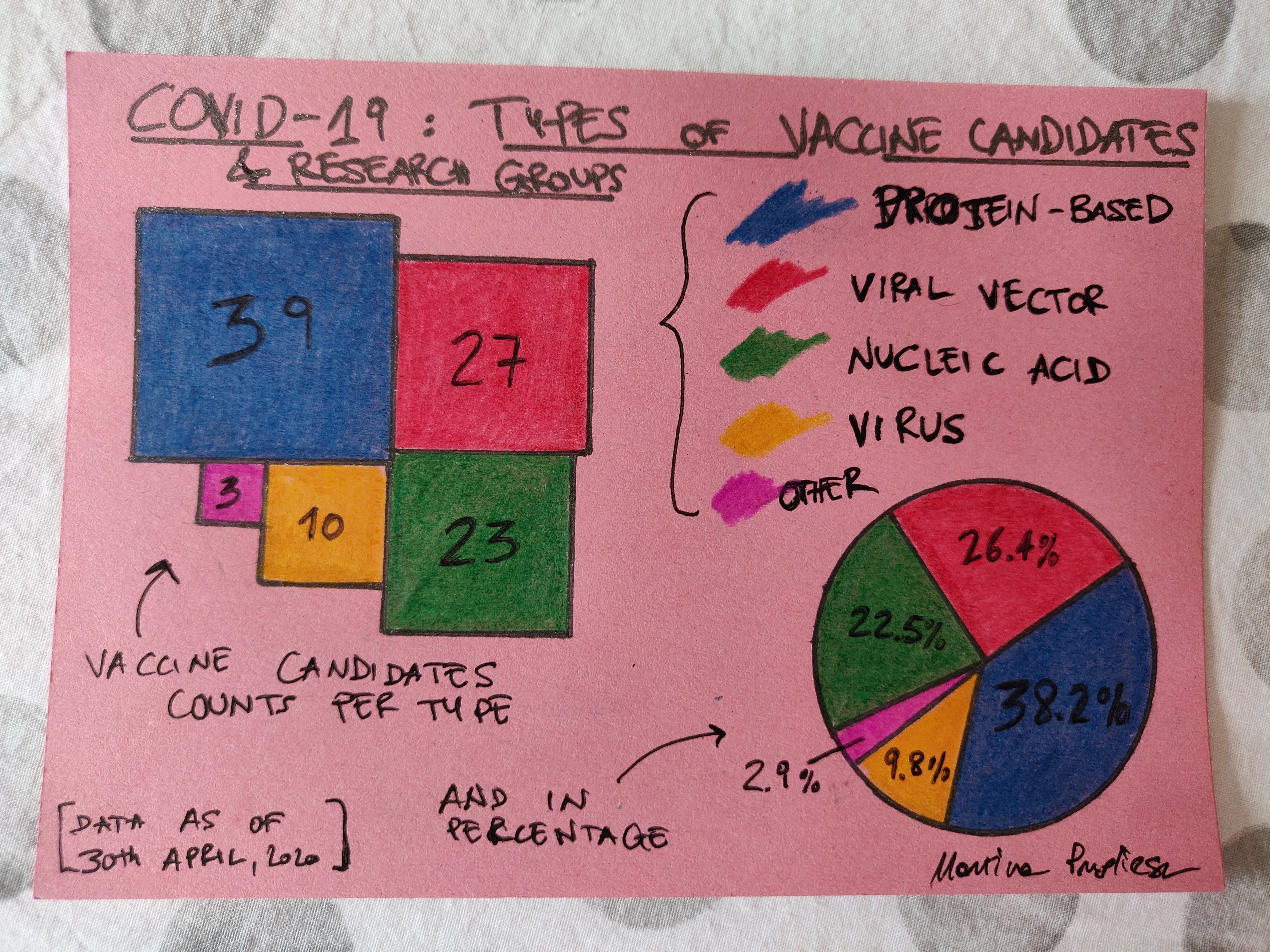The various types of vaccines under work for COVID-19
Research into creating a vaccine against COVID-19 is very lively these days, and many groups are already producing promising results, such as candidates which are already in the clinical stage (see this other post for a card on the volumes of candidates in time).
These vaccine candidates are of different types, and a lot of them use methods which are relatively new, some of which having no licensed vaccine yet. Nature News gives a very useful guide to them, and it has been the main source of the information in this post, other than the WHO report which has provided the numerical data.
All the info here refers to date 30th April 2020 (date of the last WHO report as of the time of writing this).

Let’s have a brief look at what these types are (all these summaries are very simplified/simplistic):
Virus-based vaccines
These are the traditional types, you basically use the virus you’re building the vaccine against itself. Most existing vaccines work this way and it’s the oldest form of vaccination science has come up with. There’s two categories, depending on what form of the virus is used:
- weakened virus: a less dangerous (as it has undergone mutations) form;
- inactivated virus: chemicals or heat are used to inactivate it
Only 10 of the 102 candidates for COVID-19 belong to this type. Note that on average the development of an effective vaccine takes about 10 years (see the PLOS reference). This method usually takes a lot of time spent in safety testing.
Viral-vector vaccines
The idea here is to use another virus as a vector: it gets weakened and engineered to produce the proteins of the targeted pathogen and it is then inserted in the body. Two categories exist:
- replicating vector: the virus can replicate
- non-replicating vector: the virus is made to not be able to replicate in the cells
The Ebola vaccine, which took 5 years to develop, belongs to the replicating category; there are no existing vaccines of the non-replicating category today.
27 groups are working on this method for COVID-19, the second-largest type.
Nucleic-acids method vaccines
With this method, the RNA or DNA (depending on the virus) of the virus is inserted in the body to make the viral proteins. This method is considered safe and easy, but there’s no licensed vaccines using it as of now. Currently in use by 23 groups for COVID-19.
Protein-based vaccines
Here you inject only the proteins of the virus in the body. There’s no genetic material so no risk of triggering the disease. There’s two categories:
- protein-subunits: the protein itself is injected
- virus-like particles (VLP): an empty shell with surface proteins but no genetic material is injected
The vaccine developed against SARS-CoV, which had been tested with success on monkeys, is of the first category. VLPs are hard to manufacture.
This method is the one used by most groups for COVID-19: 39 of them, making up for about 38% of the landscape.
Other approaches
The WHO reports no information on other approaches (the report writes “unknown”) - 3 groups are reported to be here.
References
- WHO landscape of COVID-19 candidate vaccines, 30 April 2020
- E Callaway, The race for coronavirus vaccines: a graphical guide, Nature News Feature, 28 April 2020
- E S Pronker et al, Risk in Vaccine Research and Development Quantified, PLOS One, 8(3), March 2013
- T Ura, M Shimada, Developments in Viral Vector-based Vaccines, Vaccines, 2(3), July 2014
- Vaccines based on Viral Vectors, WHO Informal consultation report, December 2003